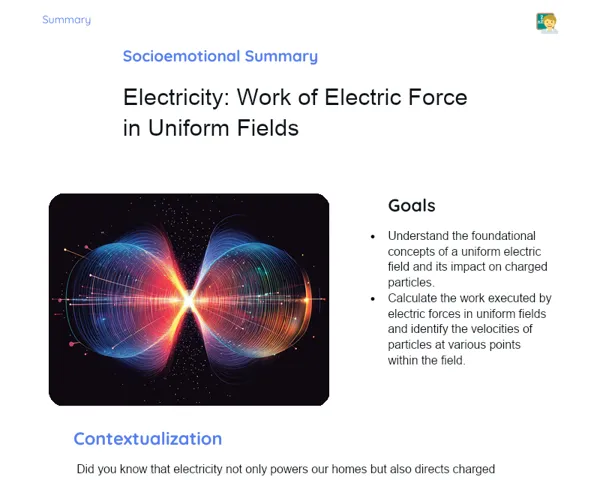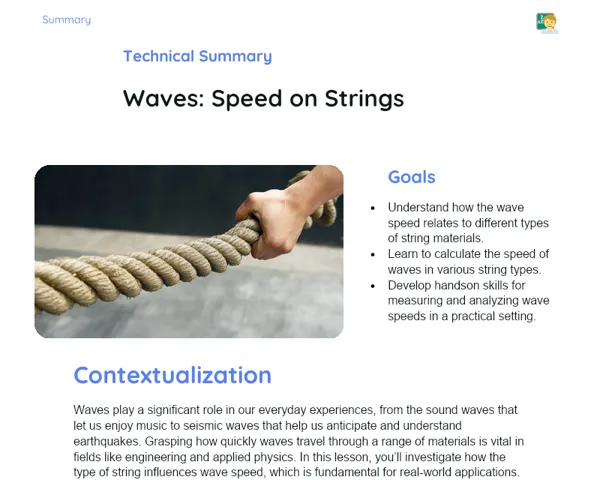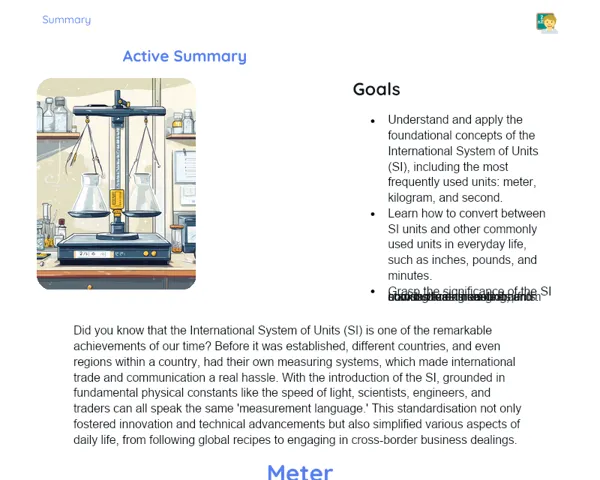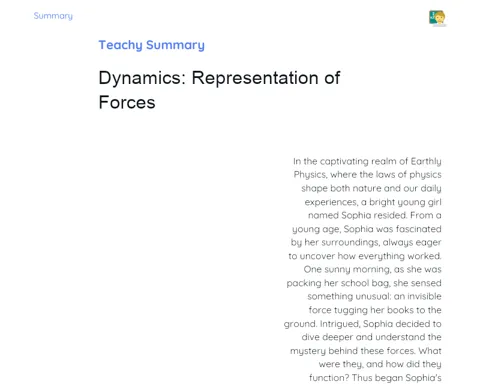Goals
1. Grasp the concept of work done by gravitational force.
2. Learn to apply the formula τ=mgh to determine the work done by gravitational force.
3. Utilise this knowledge in practical, everyday scenarios.
Contextualization
The concept of work done by gravitational force is crucial for grasping how energy is transferred and used in the real world. Picture a builder lifting heavy blocks or an athlete leaping high into the air. In both cases, gravitational force is at play. Understanding this principle enables us to analyse and improve countless daily and industrial tasks.
Subject Relevance
To Remember!
Concept of Work Done by Gravitational Force
Work done by gravitational force pertains to the energy transferred when this force acts on an object, moving it in a specific direction. We calculate this work using the formula τ=mgh, where 'm' indicates the mass of the object, 'g' is the acceleration due to gravity, and 'h' is the height change. This concept is key to comprehending how energy is utilised and transformed across practical and industrial contexts.
-
Work done by gravitational force represents a specific type of work accomplished by a constant force.
-
We use the formula τ=mgh to quantify the work done by gravitational force, with 'm' being the mass in kilograms, 'g' the gravity (approximately 9.8 m/s² on Earth), and 'h' the height change in meters.
-
This principle is essential for understanding energy transfer in physical systems.
Formula for Work Done by Gravitational Force: τ=mgh
The formula τ=mgh calculates the work done by gravitational force. Here, 'τ' denotes work, 'm' is the object's mass, 'g' is the gravitational acceleration, and 'h' signifies the change in height. This formula helps us measure the energy transferred when an object is raised vertically under gravity's influence.
-
The formula τ=mgh is a mathematical expression linking mass, gravity, and height change to calculate the work done by gravitational force.
-
It's crucial to remember that gravitational force is constant, simplifying the work calculations.
-
This formula is prevalent across various fields, including engineering, physics, and applied sciences.
Practical and Industrial Applications of Work Done by Gravitational Force
The work done by gravitational force has numerous practical and industrial applications. For instance, in construction, it's used to estimate the energy required to lift materials. In logistics, it aids in optimising the transport of heavy items. Additionally, in robotics and automation, it's critical for designing machines that handle physical tasks, ensuring efficiency and safety.
-
In construction, the work done by gravitational force is instrumental in designing lifting systems and safely transporting materials.
-
In logistics, comprehending work done by gravitational force optimises heavy load handling, saving energy and cutting costs.
-
In robotics and automation, understanding this work is vital for creating machines and equipment that execute physical tasks accurately and efficiently.
Practical Applications
-
Civil Engineering: Calculating the work required to lift building materials and designing lifting systems.
-
Logistics: Optimising the transportation of heavy loads, conserving energy and lowering operational costs.
-
Robotics: Developing machines and equipment that perform precise physical tasks, leveraging the concept of work done by gravitational force.
Key Terms
-
Work Done by Gravitational Force: Energy transferred when an object is moved by the force of gravity.
-
Formula τ=mgh: Mathematical expression to calculate the work done by gravitational force.
-
Gravity (g): The acceleration exerted by the Earth on objects, roughly 9.8 m/s².
Questions for Reflections
-
How can you observe the concept of work done by gravitational force in your everyday activities?
-
In what ways might understanding work done by gravitational force enhance safety and efficiency in engineering projects?
-
How can knowledge of work done by gravitational force optimise processes within the logistics sector?
Practical Challenge: Measuring the Work Done by Gravitational Force
This mini-challenge aims to reinforce your understanding of the work done by gravitational force through a simple hands-on activity.
Instructions
-
Gather the required materials: a wooden rod, string, small weights of various masses, a ruler, and a digital scale.
-
Construct a simple balance by securing the wooden rod vertically and attaching the string at a high point on the rod.
-
Hang different weights from the string and measure the height at which each weight is raised.
-
Using the formula τ=mgh, compute the work done by gravitational force for each weight lifted.
-
Document your observations and calculations on a piece of paper.



